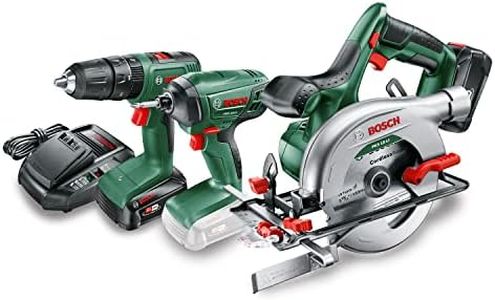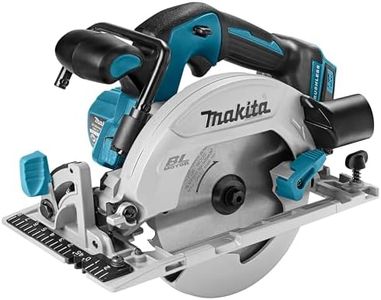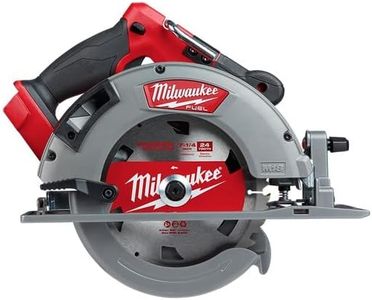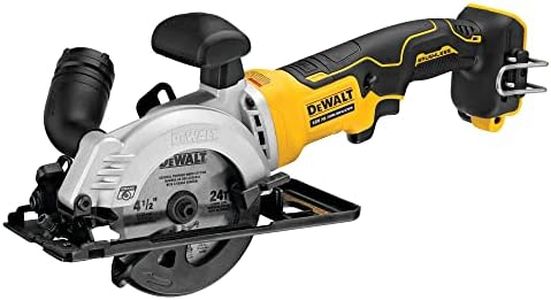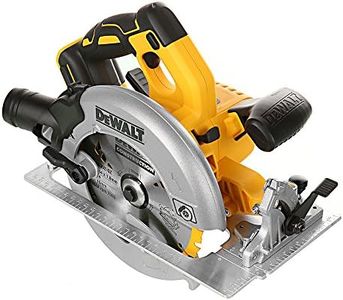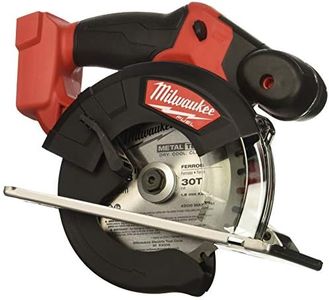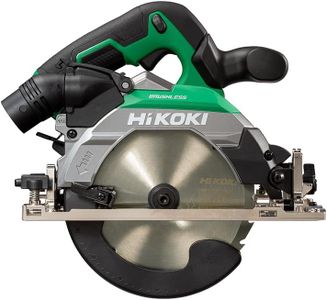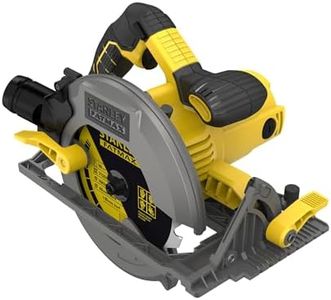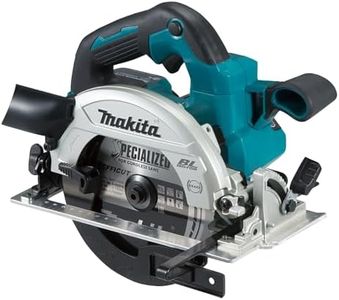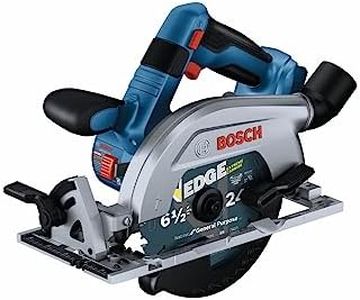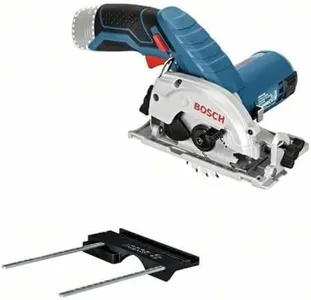We Use CookiesWe use cookies to enhance the security, performance,
functionality and for analytical and promotional activities. By continuing to browse this site you
are agreeing to our privacy policy
10 Best Circular Saws
From leading brands and best sellers available on the web.By clicking on a link to a third party's website, log data is shared with that third party.
Buying Guide for the Best Circular Saws
Choosing the right circular saw is about matching the tool to the jobs you’re likely to do. Circular saws are powerful and versatile, helping with everything from simple DIY tasks to bigger construction projects. To pick the best saw for you, it’s important to understand the main features—these affect not only how the saw performs, but also how safe and comfortable it feels to use. Consider what projects you plan to tackle most often, and let this guide your decisions on the most important specifications.Blade SizeBlade size refers to the diameter of the saw blade that the tool can use, usually measured in inches or millimeters. This is important because it determines the maximum cutting depth the saw can achieve—larger blades can generally cut through thicker materials. Smaller blades, such as 5-1/2 to 6-1/2 inches, are good for lighter work, thinner boards, and improved maneuverability, which suits DIY or hobby users. Typical general-purpose saws use 7-1/4 inch blades, offering a good balance for most home projects and even some heavier tasks. There are also larger sizes for professional-grade jobs that require deep cuts, like cutting thick lumber. Think about the maximum thickness of material you expect to cut most often to help guide your blade size choice.
Motor PowerMotor power in circular saws is often listed in amps, volts, or watts, depending on whether the saw is corded or cordless. The power rating indicates how easily the saw can cut through tough or thick materials—more power usually means easier, smoother cutting with less strain on the tool. Lower-powered saws (10-12 amps, or 12-18 volts) are lighter and easier to handle for small projects and occasional use, while higher-powered options (15 amps, or 20 volts and above) can tackle heavier, more frequent tasks and tougher materials. If you plan on cutting dense woods or making a lot of cuts in a row, aim for a higher power rating. For light, infrequent work, a modestly powered saw will likely be sufficient and more comfortable to use.
Corded vs. CordlessCorded saws plug into an electrical socket and provide continuous power, making them ideal for long projects or heavier cutting where running out of power is a concern. They also tend to be more powerful for the price, but you’ll have to work near an outlet or use extension cords. Cordless saws use rechargeable batteries, giving you great portability and freedom of movement, which is handy for working outside or away from power sources. Today’s batteries hold enough power for many medium-duty tasks, but may still fall short for very demanding jobs. If you work mostly in a workshop or garage, a corded saw might serve you best. If you value flexibility, are often on the move, or do lighter work, consider cordless.
Cutting CapacityCutting capacity usually refers to the maximum depth the saw can cut at 90 degrees (straight down) and at commonly used angles like 45 degrees (for bevel cuts). Cutting depth matters because it determines how thick the material can be and whether you can complete the cut in one pass. Saw specifications will often list the maximum depth at these angles, helping you compare models. If you mostly cut thin sheets or boards, a smaller cutting depth is fine. For bigger jobs, or if you may work with thicker lumber, look for a deeper cutting capacity that matches your needs.
Weight and ErgonomicsThe weight of a circular saw and how it feels in your hands plays a big role in comfort and control. Heavier saws can be more stable during cutting and generally have more power, but they may be hard to handle for long periods or above your head. Lighter saws are easier to maneuver and better for overhead or vertical cuts, but might vibrate more on tough materials. Ergonomics refers to the design of the handles, trigger, and the balance of the saw—how natural and safe it feels to hold and operate. When choosing, think about your own strength and whether you’ll use the saw for long jobs or occasional quick cuts. Try to pick a saw that feels comfortable and balanced to you.
Bevel Capacity and AdjustmentBevel capacity describes how far the saw’s base plate (shoe) can tilt, enabling you to make angled cuts (bevels) for tasks like making frames or joints. Some saws have limited bevel angles (up to 45 degrees), while others go further (up to 55 degrees or more). Adjustable bevel stops make it easier to quickly switch to common angles. If you expect to do mostly straight cuts, bevel capacity is less important, but it’s useful if you plan on making furniture, trim, or angled joints. Consider how often you’ll need angled cuts, and whether easy adjustment and clear markings matter to you.
Safety FeaturesSafety features help protect you when using a circular saw. Common elements include blade guards, electric brakes that stop the blade quickly after you release the trigger, and safety switches to prevent accidental starts. Blade guards cover the spinning blade when not cutting, reducing risk of accidental contact. An electric brake saves time and can prevent injuries by stopping the blade fast. While all saws have some safety features by design, some add more convenience or security. If you’re new to using power saws or value maximum safety, look for models that highlight these features.
